ServiceNow Simplifying HR Services with Employee Document Management: Key Features and Benefits
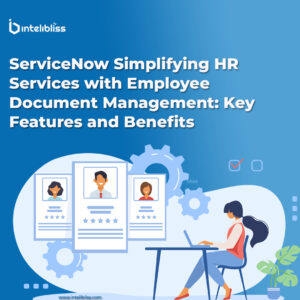
What is HRSD and Core Components Of HRSD?
Human Resources Service Delivery (HRSD) is a digital solution designed to optimize HR services by automating routine tasks and providing a centralized platform for managing employee requests and cases. It enables employees to easily access HR services through a unified service catalog while allowing HR teams to efficiently deliver and manage these services.

Core Components of HRSD in ServiceNow:
- HR Case Management: Resolves employee inquiries and requests, ensuring efficient case tracking and resolution.
- Knowledge Management: Provides employees and HR professionals with easy access to a centralized knowledge base, enhancing self-service and problem-solving.
- Employee Journey Management: Automates key milestones such as onboarding, offboarding, and promotions to ensure smooth transitions.
- HR Integration: Connects HRSD with other systems, improving data flow and operational efficiency.
- Employee Document Management (EDM): Securely stores and manages employee documents, including contracts and performance reviews, with defined access controls and retention policies.
- Employee Service Center: A user-friendly portal where employees can access HR services, submit requests, and track case status, enhancing the employee experience.
- Now Intelligence: This includes advanced capabilities like Now Assist, Virtual Agent, Predictive Intelligence, and Performance Analytics, empowering HR teams with data-driven insights and automation.
What is Employee Document Management (EDM)?
Employee Document Management (EDM) is an essential part of the HRSD in ServiceNow, [Washington DC release]. It allows organizations to streamline and manage employee documents efficiently. The [com.sn_employee_document_management] plugin must be installed to activate EDM, with configuration access granted only to admin users.
Plugins needed | [com.sn_employee_document_management] |
Role requires | admin |
This feature ensures that documents are securely stored, categorized, and easily retrievable, with strict access controls and retention policies in place to maintain data integrity, accuracy, and confidentiality.
Why is Employee Document Management Crucial for the Employee Experience?
Managing employee documents can be time-consuming and error-prone. Traditional methods like faxing, scanning, and searching through paper files are cumbersome and risk data breaches. Without a centralized document management system, organizations struggle to provide a seamless and secure experience for employees.
EDM simplifies the management of sensitive documents such as contracts, performance reviews, and payroll information. It enhances data security, ensures compliance with retention policies, and creates a smoother, more efficient HR experience for both employees and HR teams.
How EDM Works: Key Features
- Document Types [sn_hr_ef_document_type]: Organizes documents by type, including employee contracts, reviews, and more.
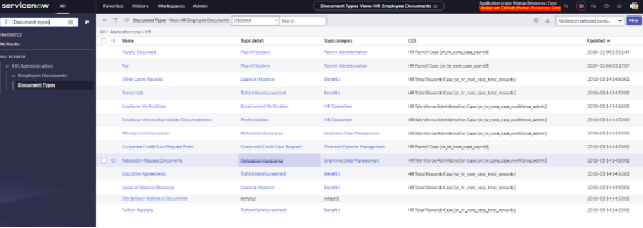
- Retention Periods[sn_hr_ef_retention_period]: Defines how long documents should be kept based on company policy.

- Retention Policies [sn_hr_ef_retention_policy]: Establishes the criteria for how long to retain specific documents before they are purged
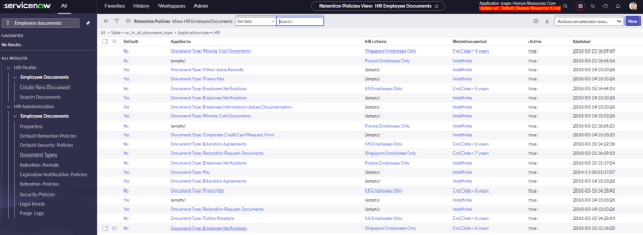
- Security Policies [sn_hr_ef_security_policy]: Sets permissions for who can view, create, or delete documents, ensuring sensitive data is protected.
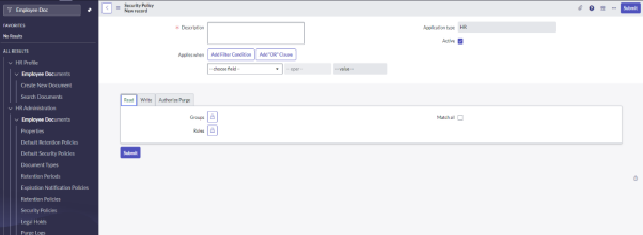
- Legal Holds [sn_hr_ef_legal_hold] : Ensures compliance by tracking legal holds on documents when necessary.
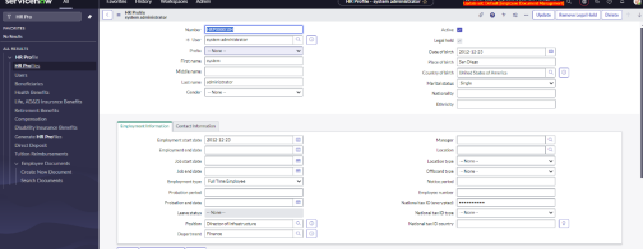

Benefits of Employee Document Management
- Boost Efficiency and Empower Self-Service: Streamline document management to allow employees easy access to their documents, improving self-service capabilities and reducing manual interventions by HR teams.
- Simplify HR Record Keeping: Centralize employee records in one system, ensuring better organization, enhanced productivity, and maintaining high standards of security and compliance with minimal effort.
- Easy Control of Sensitive Information Access: Implement role-based access controls to manage who can view, create, or delete sensitive documents, ensuring confidentiality while simplifying document security.
- Secure All Files in One Solution: Store and manage employee files based on specific document properties and employee details, providing a comprehensive and secure document management system within a single platform.
- Keep Records Accurate and Up-to-Date: Automatically update and maintain employee records, ensuring that all information is accurate, current, and available for both HR staff and employees.
- Automate Document Transfer: Seamlessly move case-related documents from HR Service Delivery (HRSD) to the employee’s document file, eliminating manual uploads and ensuring proper documentation is always on hand.
User Roles and Permissions in EDM
- Administrators: Configure the EDM system, set up categories, retention policies, and assign appropriate access roles to employees.
- Agents: Upload and manage employee documents within the HR case workflow, ensuring compliance with access permissions.
- Employees: Upload personal documents (e.g., tax forms) and view their documents through self-service.
Conclusion:
Employee Document Management (EDM) is a crucial component of HRSD that enables organizations to securely and efficiently manage employee documents, ensuring compliance, data integrity, and a better employee experience. By streamlining document handling and automating routine tasks, EDM enhances productivity and service delivery across the organization.
